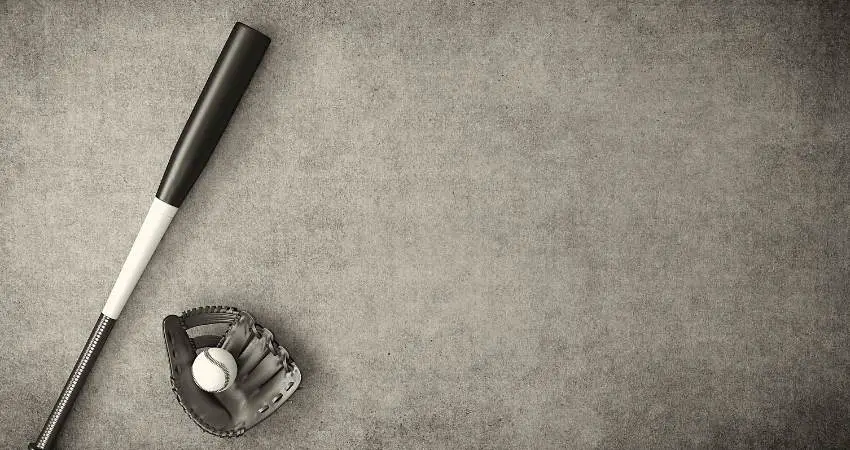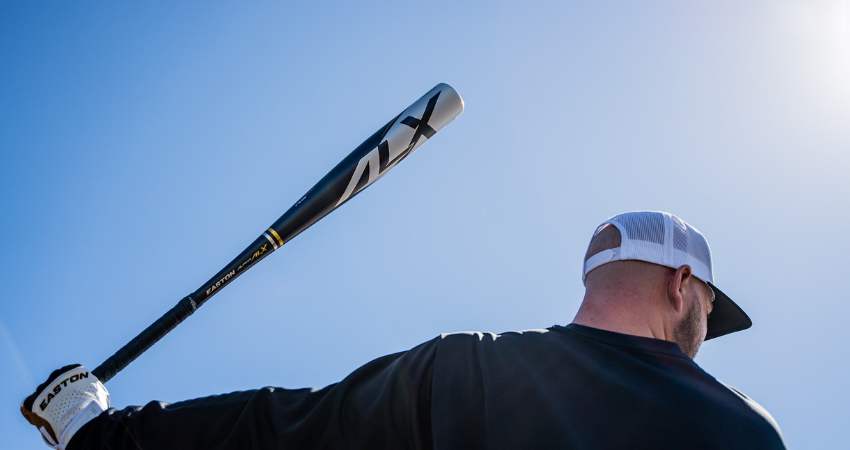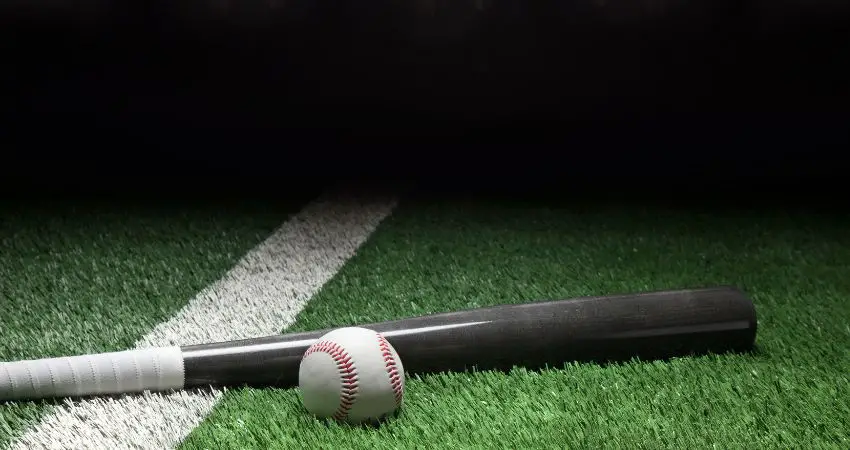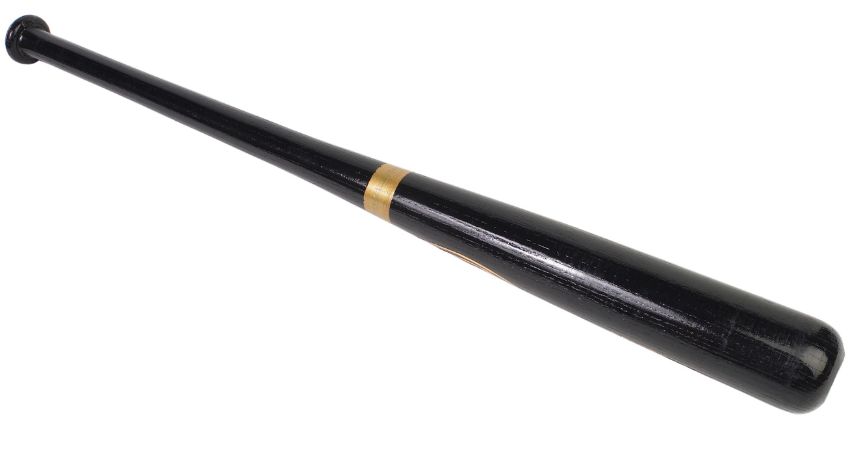Say what you will about baseball – there’s nothing better than hearing the loud crack of a baseball bat as it meets the ball in a stand full of fans. There are few things as iconic as that sound, and baseball fans across the globe can attest to that. And many people grow up dreaming of creating that crack sound themselves.
However, as you grow older and learn more about baseball bats, you’ll come to know about the different types of them. You’ll also see that wooden baseball bats that are used in professional MLB games are rarely used in high school or other amateur baseball leagues. Down here, metal bats reign supreme.
But what exactly do I mean when I say “metal baseball bats”?
What are Metal Baseball Bats Made of
And how are they different from their wooden counterparts?
I mean, the sound that a metal baseball bat produces is miles apart from what you hear with a wooden bat, but apart from that, is there really any difference? Well, the short answer – Yes, the two bat types are as far as they can be from one another.
However, before you delve deeper into the differences between the two bat types, you first need to know what metal baseball bats are actually made of. And that’s what I aim to help you learn. So, let’s get started.
Table of Contents
What Are Metal Baseball Bats? And What are Metal Baseball Bats Made of?
If you follow MLB games, you’ll notice how all players use wooden baseball bats. But when it comes to commercial baseball bats, wood is not the most popular material of choice. You see, commercial baseball bats can be made from either wood, metal, or carbon composite materials.

The biggest disadvantage to a wood baseball bat is that it’s not very durable. Even a high-quality wooden baseball bat that you spend top dollar on can shatter after a couple of months or rigorous use. For MLB players, that’s not a big deal. But for a casual or amateur player, spending money on bats every few months isn’t very appealing.
That’s why, for casual and amateur plays, a metal baseball bat is more appropriate. These bats are made of aluminum alloys, have a lighter weight, and also offer a lot more durability compared to wooden bats. Of course, they are a bit more expensive, but for amateur players, metal baseball bats often offer a better value.
Are Aluminum and Metal Bats the Same?
You’ll often see people refer to metal baseball bats as aluminum bats, and in most cases, they would be right. But there’s a small difference between an aluminum baseball bat and a metal bat.

You see, all aluminum bats can be considered metal bats since aluminum is a type of metal itself. However, when you’re buying a metal baseball bat, it often comes with some extra metal elements such as zinc, nickel, or copper to give it a bit more oomph.
The more appropriate term for metal bats would be aluminum alloy bats. Since metal baseball bats are optimized with additional alloys, they usually perform better, feel lighter, and last longer.
What are the Advantages of Metal Baseball Bats?
Metal baseball bats are extremely popular in college and amateur baseball leagues. At least compared to wooden baseball bats, they offer a noticeable bump in performance. Don’t get me wrong – wooden baseball bats are amazing; the pros can attest to that.

But there are some advantages that metal baseball bats offer that are extremely handy for an amateur league player. Here are some of the benefits that you’ll get with a metal baseball bat.
· Lightweight Design
The first advantage that you’ll get with a metal baseball bat is its lightweight design. You see, aluminum, which is the primary material that’s used to manufacture these bats, is extremely light. As a result, the weight of a metal baseball bat compared to other bat types is almost non-existent.

Now, what does that do for you as a player? Well, because of the lighter weight of a metal bat, you’ll be able to swing it easier. Even a relative newcomer to the sport will have an easy time swinging an aluminum bat with a bit of practice in the batting cages.
· Better Durability
Not only are aluminum baseball bats lighter, but they also last longer. Metal is a stronger element compared to wood. It can take a lot more abuse, which means breaking a metal baseball bat is much harder compared to wooden bats, which shatter every couple of months.
Of course, that doesn’t mean aluminum bats are invincible. After a while, you might start seeing cracks on your aluminum bat, or the overall power of the bat might decline suddenly. But in general, an aluminum bat should last you one or two seasons without any issues.
· Larger Sweet Spot:
Another huge plus with aluminum baseball bats is that they have a larger sweet spot compared to other types of bats. The sweet spot of a bat refers to the spot that delivers the most power and accuracy when you hit the ball. That means you’ll be able to hit homers more consistently with aluminum baseball bats.
Now, the sweet spot size of a bat isn’t necessarily the be-all and end-all of its quality. In fact, wooden bats have a very small sweet spot, yet the pros hit home runs all the time. But since the sweet spot is larger in metal baseball bats, a beginner hitter will have an easier time learning the fundamentals of hitting with it.
· Adaptability to Weather:
Aluminum baseball bats are extremely adaptable to weather. Sure, playing with an aluminum baseball bat in cold weather is a bad idea as it can crack, but as long as the temperature is within reason, an aluminum bat will work perfectly. Wooden bats, on the other hand, can contract or expand depending on the temperature, affecting their performance and lifespan.
How Are Metal Baseball Bats Made?
Manufacturing a metal baseball bat, or any baseball bat, for that matter, requires careful engineering and design. Top baseball bat brands utilize various tricks and technologies to make sure the end result turns out nothing short of perfect.
To manufacture metal baseball bats, high-quality aluminum or alloy plates are heated, shaped, and forged into the bat profile. But it’s not as simple as it sounds. The manufacturer also needs to calculate different elements, such as weight distribution, sweet spot size, exit velocity, etc., when producing the bat.
Needless to say, a lot of the critical aspects of manufacturing a baseball bat are considered trade secrets for different brands. But in my experience, a reputed baseball brand always makes sure the bats that leave their factory are in top shape and meet their performance standards.
Frequently Asked Questions:
By now, you should have a pretty clear idea about what metal baseball is all about. But it’s understandable if you still have questions. So, let me address some of the ones that I often get asked about when people are talking about metal baseball bats.
Are metal bats better than composite baseball bats?
Composite bats are a relatively recent entry into the world of baseball. Now, a common consensus is that composite bats are better than alloy bats in almost every aspect but the price. But the break-in period of composite bats is a major drawback if you ask me. To know more about the differences between composite and alloy bats, I would recommend going through this article.
Is there any downside to metal baseball bats compared to wooden bats?
Every baseball bat has its share of drawbacks, and metal baseball bats aren’t any different. Metal bats compared to wooden bats, give you a higher exit velocity, which means it can raise some safety concerns when you’re playing a casual game. With wooden bats, there are no such safety issues to worry about.
Do MLB players use metal baseball bats?
Major League Baseball has strict regulations on the gear that a player can use in the games. As such, the use of baseball bats that are made of anything other than wood is strictly forbidden. Metal bats are popular in college and amateur leagues, but using them in MLB games is a no-no.
Now That We’re Here
Metal baseball bats are an amazing addition to the world of baseball, making the sport more accessible to newcomers. Because of its lighter weight and greater sweet spot, even a beginner can have fun playing the game.
When you’re equipped with a high-end aluminum baseball bat, you’ll be able to send the ball flying to the stands with some practice. Of course, there’s no alternative to practice, and if you want to go big, you need to do your time in the batting cage.
I hope my in-depth look into what metal baseball bats are made of could help you understand these bats better. Cheers!
